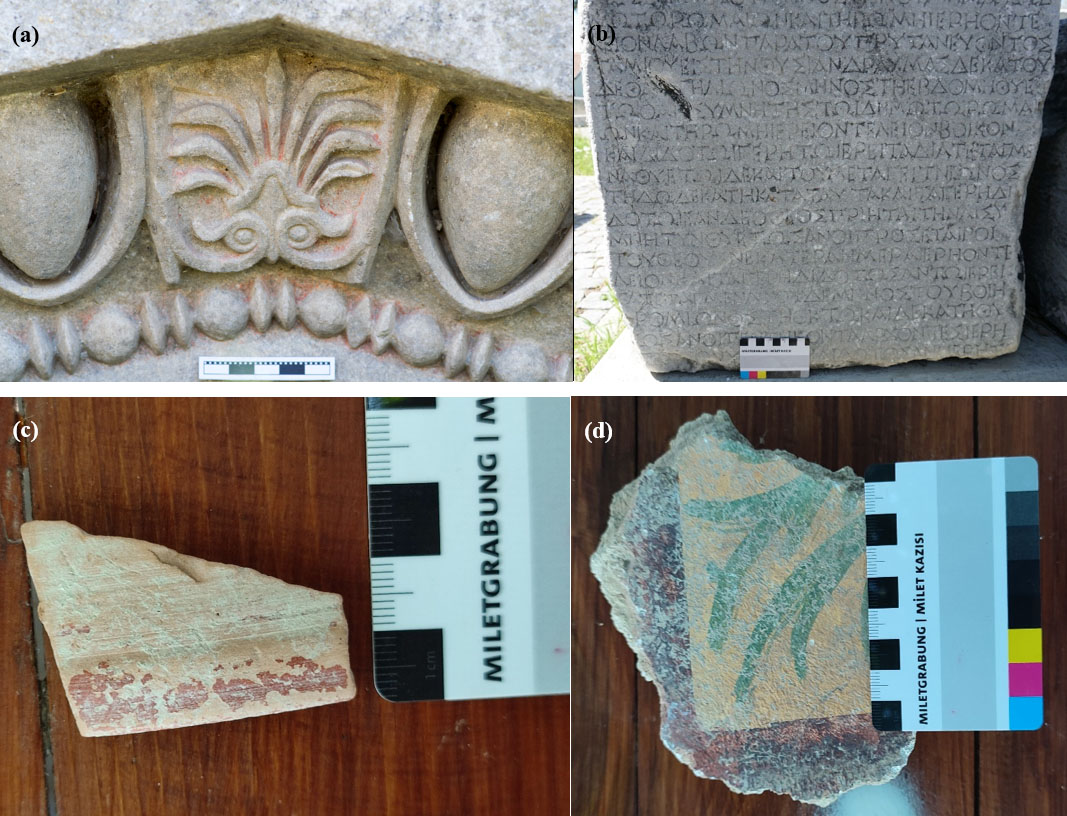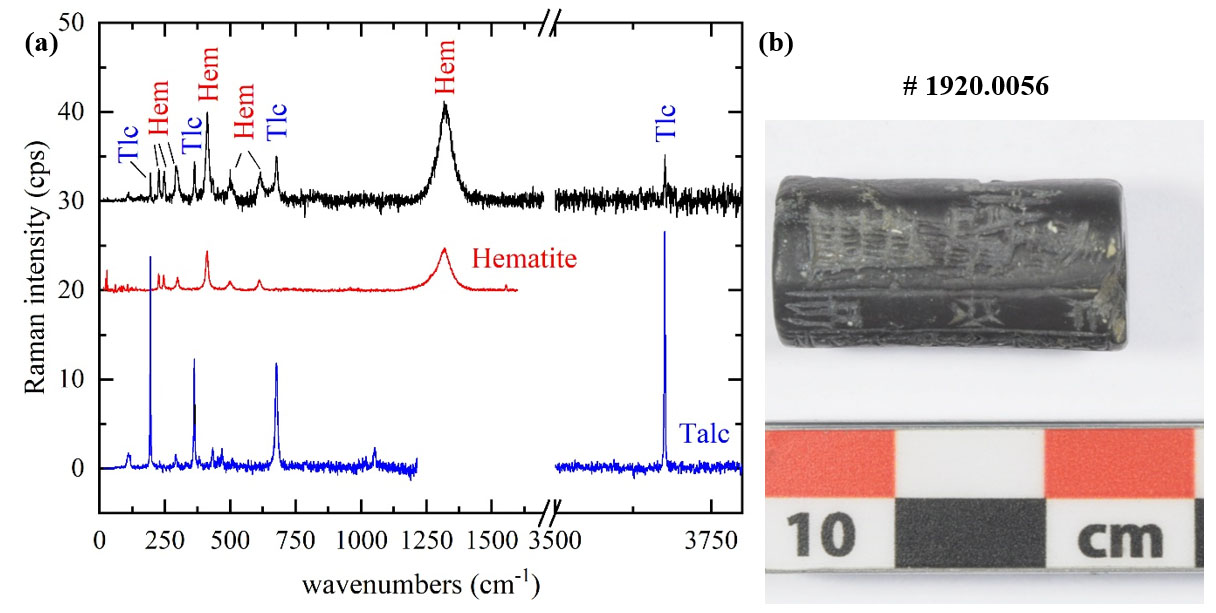Painting the ancient world: crystallochemical characterization of pigments and minerals in ancient written artefacts (DFG (Exzellenzcluster UWA))
The primary goals of the project "Painting the Ancient World: Crystallochemical Characterization of Pigments and Minerals in Ancient Written Artefacts" (RFA19) are:
- to apply a multi-analytical approach based on non-destructive techniques for identifying the chemical and structural properties of colour and weathering-related products on rock-based inscriptions and their writing supports, as well as on other objects from two different localities of the Hellenistic and Imperial Greece and Asia Minor
- to determine non-destructively the mineral-phase composition and crystal structure of cylinder seals, dated between 3200 and 400 BCE, by Raman spectroscopy and other complementary analytical techniques
- to develop quantitative relationships between the crystal chemistry and Raman scattering in other subgroups of layered silicates, present in cultural-heritage objects, by following the already established methodology for biotite (Aspiotis et al., 2022: DOI: 10.5194/ejm-34-573-2022).
Since Ancient Times, colour has been a well-known practice for enhancing the appearance of an object, such as rock-based written artefacts, sculptures, ceramic pots, et cetera. Writing can furthermore be perceived more clearly or be obscured, it can be emphasized or put in the background by using various colours. Besides the message of the engraved text, valuable information about peculiar characteristics of societies can be delivered from the mineralogical analyses of their rock-based writing supports, which may therefore advance provenance studies. Hence, several cultural-heritage objects, such as construction constituents of historical buildings (Photo 1a), epigraphic stele (Photo 1b), daily life ceramics (Photo 1c) and ornamentations including frescoes (Photo 1d) with colour remnants or weathering-related products on their surface are going to be analysed by applying material-science analytical methods such as Raman spectroscopy, Fourier-transform infrared (FTIR) reflection spectroscopy, X-ray fluorescence (XRF) reflection and near-infrared spectroscopy (NIR). All these historical objects are findings belonging to Miletus; one of the most prominent cities of Mediterranean in the Classical Period. Goal is to verify whether the same pigments have been used for the colouring of different objects of the daily life in Miletus and if their material properties change in time.

Stylianos Aspiotis
As the chemistry of layered silicates and in general their material profiles can deliver valuable information on provenance, the second phase of this project encompasses the non-destructive crystallochemical characterization via Raman spectroscopy of other groups of layered silicates abundant in cultural-heritage objects such as cylinder seals, ceramic pots, inscribed gems, and earth pigments. For instance, the collaboration with the Museum für Kunst und Gewerbe (MKG, Hamburg) enable us to study several old Babylonian (below) to Neo-Assyrian cylinder seals, where the importance of material analysis performed by FTIR and Raman spectroscopy, will be highlighted since the traditional macroscopic observations and material assignments are not accurate enough and should be revised.

Stylianos Aspiotis
Acknowledgements: The research for this project was funded by the Deutsche Forschungsgemeinschaft (DFG, German Research Foundation) under Germany’s Excellence Strategy for “Understanding Written Artefacts: Material, Interaction and Transmission in Manuscript Cultures” (EXC 2176; project no. 390893796). The research was conducted within the scope of the Centre for the Study of Manuscript Cultures (CSMC) at Universität Hamburg.
- Duration: 2023-2025
- Project lead: Stylianos (Stelios) Aspiotis
- Sponsor: DFG-funded Cluster of Excellence Understanding Written Artefacts at Universität Hamburg (EXC 2076)
